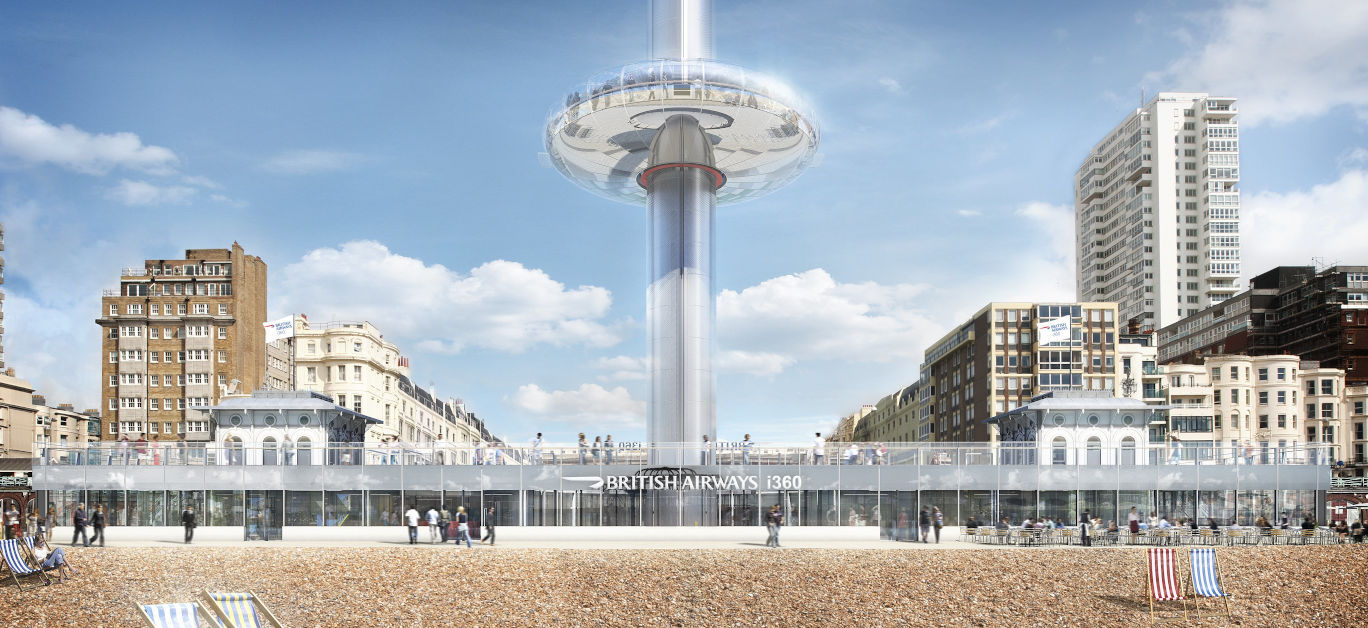For those considering a city break escape, Brighton, located on the East Sussex coast, offers a wide range of attractions to keep grown-ups and little ones entertained. This resort became very popular due to the patronage of George, the Prince of Wales, who became Prince Regent in 1811, ascended the throne in 1820, and was duly crowned King George IV.
During the 1780s, George, Prince of Wales, suffered from gout and he was advised by his physicians to visit Brighton in order to take advantage of the resort’s climate and to take regular ‘dips’ in the briny. He promptly rented a small property and discovered, to his delight, that he could avoid the intrusive Royal court and indulge in his favourite pastimes of consuming alcohol, fraternising with women, and gambling, with abandon, although debts were mounting.
In 1787 the House of Commons cleared his debts and his income was increased. He hired the renowned architect Henry Holland and instructed him to transform his Brighton property into a villa, which became known as the Marine Pavilion, frequented by the highest echelons of society.
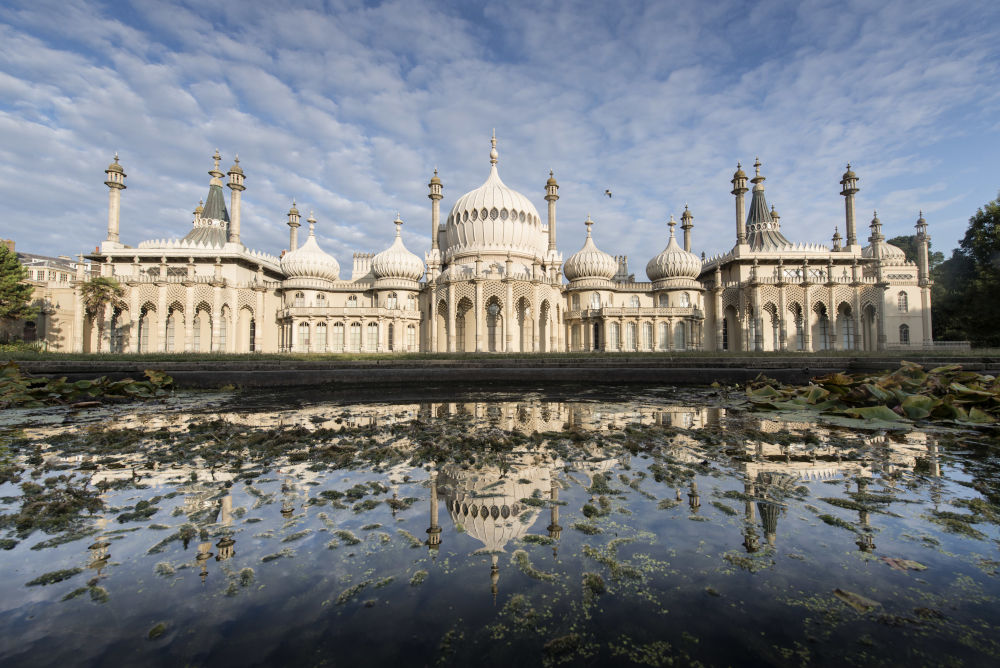
John Nash, Architect to the Prince Regent, was responsible for the design of Marble Arch and works on many other prominent London landmarks including Buckingham Palace, Regent Street and Piccadilly Circus, and in 1815 he was instructed to redesign and extend the property. The magnificent minarets, domes and pinnacles on the exterior of the building reflect the opulence of the interior rooms, galleries and corridors, which feature exquisite and intricate decoration, lavish furnishings and glittering treasures.
Although George IV’s descendants William IV and Queen Victoria frequented the Royal Pavilion, the Queen remarked that it was ‘a strange, odd, Chinese place’; she found the property too small for her growing family and purchased Osborne House on the Isle of Wight.
In 1850 the Royal Pavilion was sold to the city of Brighton for approximately £50,000 and Queen Victoria requested that the building was to be stripped of all items, which were then transported to either Buckingham Palace or Windsor Castle. A large number of these items have been returned, on loan, by Her Majesty Queen Elizabeth II, and many of them have not been seen by the public.
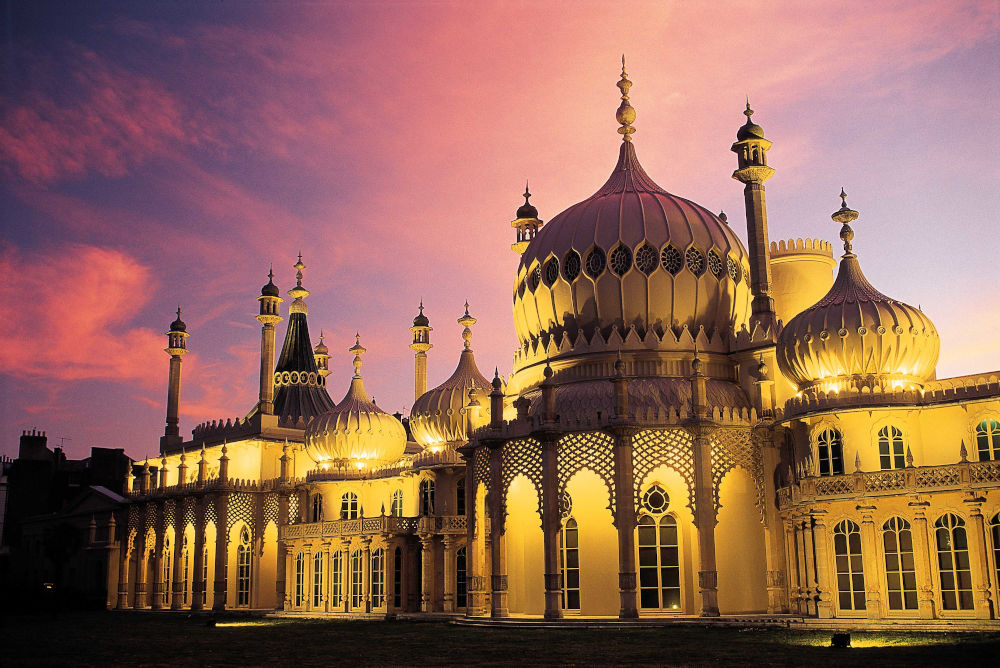
I was keen to explore the site and hopped on a local bus bound for the Royal Pavilion. The interior of the exotic property reflects a fusion of Regency splendour, Indian and Chinese styles, and a kaleidoscope of vibrant colours. I was particularly impressed with the banqueting room, which is adorned with enormous sparkling chandeliers, art works and golden dragons galore.
I was reliably informed that the prince did not sit at the end of the very long dining table but in the very centre so that he would be privy to several conversations. After dining on an extravagant menu of 32 dishes, which would last for up to six hours, guests would then head to the sumptuous lounge to relax or perhaps succumb to forty winks and then gather in the music room beneath the gilded domed ceiling festooned with hundreds of plaster cockleshells and where in 1823, Rossini performed.
After exploring the enormous kitchen and the king’s bedroom I made my way to the Royal Pavilion garden’s, which have been fully restored following John Nash’s 1820’s plans. The colourful collection of plants and flowers includes fifteen varieties of rose, rosemary, sweet Williams, lavender, blue larkspurs, peonies, hollyhocks and foxgloves.
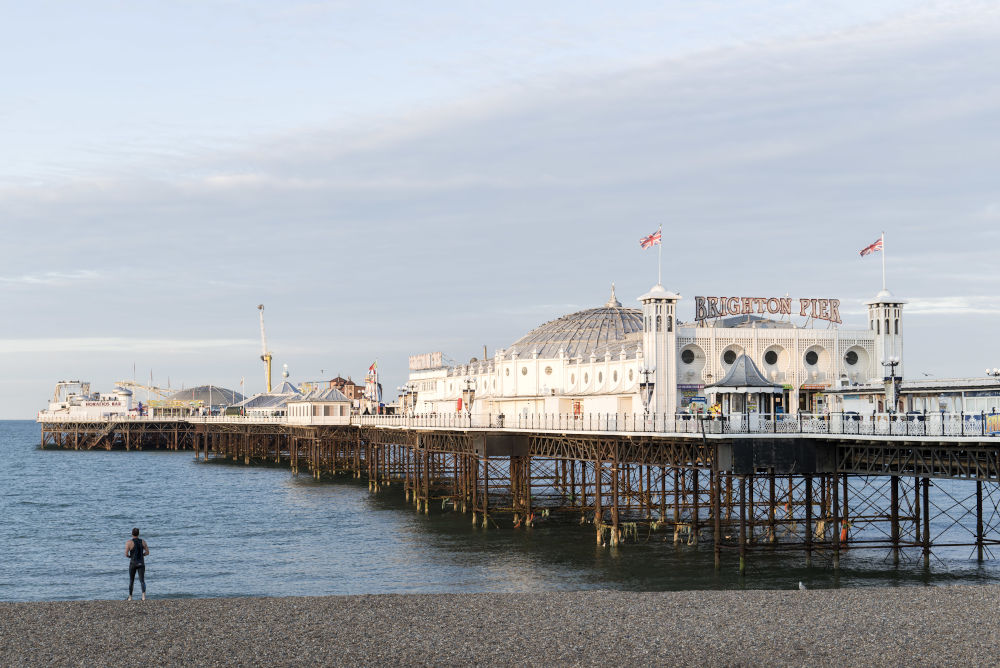
With the fragrant scents of blooms in my nostrils I headed for the promenade beside the sea and as I sauntered along at a leisurely pace passing Brighton Pier, and with my ice cream cornet melting in my hand, I looked up at a flock of sea gulls squawking overhead and spotted another popular attraction.
The British Airways i360 observation tower soars 162 metres into the blue sky and it’s a delightful experience. This ‘vertical pier’ features a fully enclosed glass viewing pod, which is very spacious, and as it gently glides up and down passengers are afforded spectacular panoramic views across Brighton, the South Downs and the glorious English Channel.
Back on terra firma I noticed the Regency Restaurant, a thriving family business, founded in 1963, which is located on the Kings Road overlooking the elegant Regency Square and opposite the i360. I selected an outside table, and whilst bathed in the warmth of the sunlight I devoured the juicy Mediterranean platter, which included the fish of the day, mussels, clams, scallops and king prawns and accompanied by the dry and elegant Chablis 2018, it was sublime.
As my first day of explorations came to an end I checked into the Legacy, a modern, low-level apartment block located on Denmark Villas, a stone’s throw from Hove railway station and ideal for families. My two-bedroom – two-bathroom apartment was spacious, airy and bright with contemporary furnishings and I immediately kicked off my shoes and made myself at home.
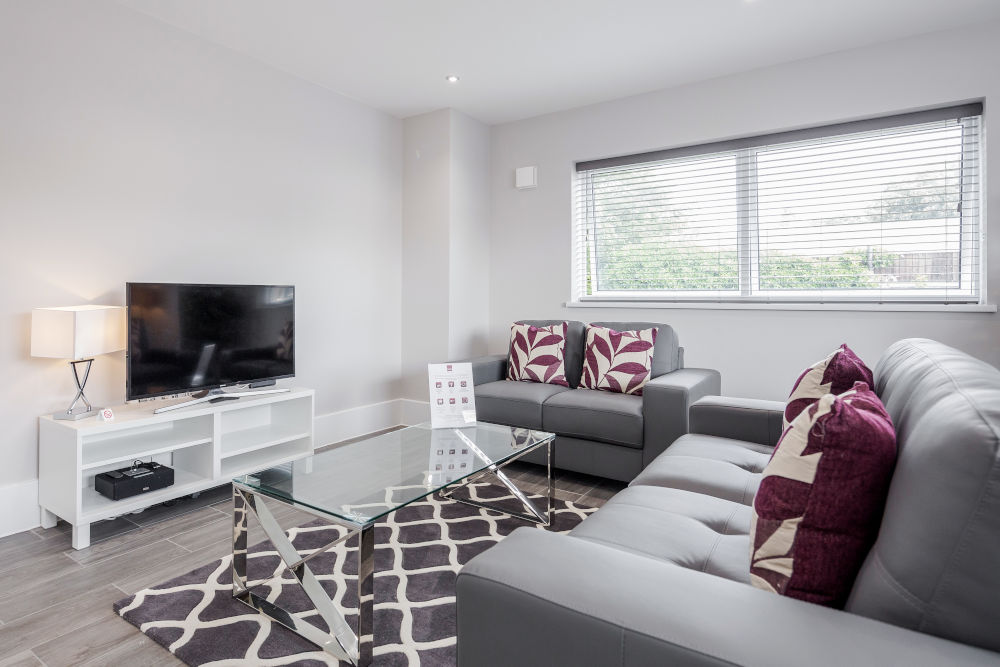
The lounge features a work station, a dining area, two comfortable sofas and a large television with Netflix. The kitchen offers every appliance including a dishwasher, hob, oven, microwave, fridge/freezer and every utensil needed to whip up a tasty snack and with a small supermarket a few steps away I was fully stocked. A washer/dryer is provided and amenities include unlimited Wi-Fi, weekly housekeeping and car parking (subject to availability and a fee).
The master bedroom, which features ample storage and a large comfortable bed swathed in crisp, white linens, resulted in a deep a restful slumber and I was delighted to discover a generous supply of Gilchrist and Soames toiletries in the en suite bathroom.
After indulging in a homemade breakfast I made my way to the Brighton Lanes, a collection of meandering narrow alleyways crammed with charming and quirky antique and jewellery shops and I browsed for hours on end.
My quest to find that illusive bargain was interrupted when I came upon English’s, the oldest restaurant in Brighton, dating back to 1945. I decided to dine al fresco and ordered the succulent rock oysters followed by the whole Dover sole, à la meunière with tartare sauce. I splashed out on the Dom Pérignon 2008, which was served with aplomb, and the dining experience was simply first class.
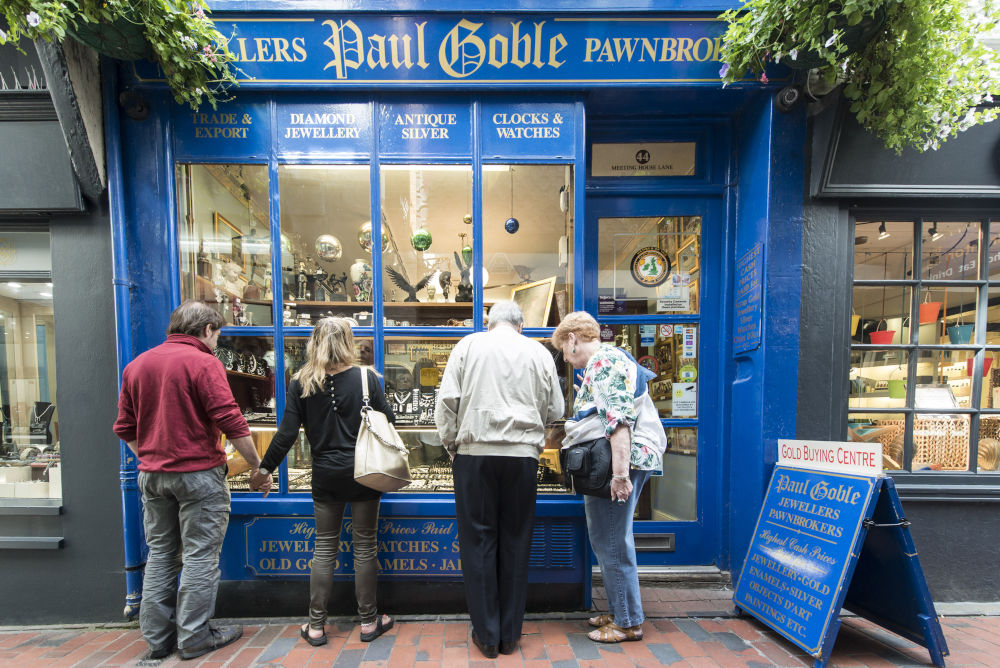
Venturing off again, I headed for the nearby North Laine and discovered a vibrant area brimming with a bohemian and eclectic mix of independent shops, cafès, juice bars, pubs and restaurants and it’s the ideal spot for ardent bargain hunters. The wide choice of locally made jewellery, clothing, accessories and trinkets ensured that my budget was blown!
Laden with shopping bags, I noticed that it was getting rather late and it was time to find a spot for dinner. Bill’s, located on North Road, was just the ticket. This spacious, rustic-style restaurant, on the site of an old bus depot, offers excellent service, an open kitchen and an enticing menu. I ordered the delicious pan fried sea bass with avocado, cherry tomato, caper salsa and herb rösti, and the Gavi Voltolino 2018 was the perfect accompaniment.
Striking up a conversation with a small group of fellow diners I remarked that it was my last night in Brighton and I proposed a toast; ‘To George IV, who died in 1830 at the age of only 68, and although his political opponents considered the Royal Pavilion a waste of public funds, it remains a popular attraction and a testament to his creativity and his love of Brighton’.
Factbox
Top tip – Accommodation
For more information on the featured property, visit roomspace.com.
Top tip – Travel
Avoid the parking problems in Brighton and travel direct from London Victoria to Brighton and/or Hove. For more information, visit southernrailway.com.
Top tip – Local transport
Get around Brighton and Hove with a multi-trip ticket valid for 10, 20 or 30 journeys within the boundaries of Shoreham, Patcham, Falmer and Saltdean. For more information, visit smartbuses.co.uk/smart-card.
Hop on Volk’s electric railway, which runs from Brighton Aquarium to the Marina and back. For more information, visit volksrailway.org.uk.












